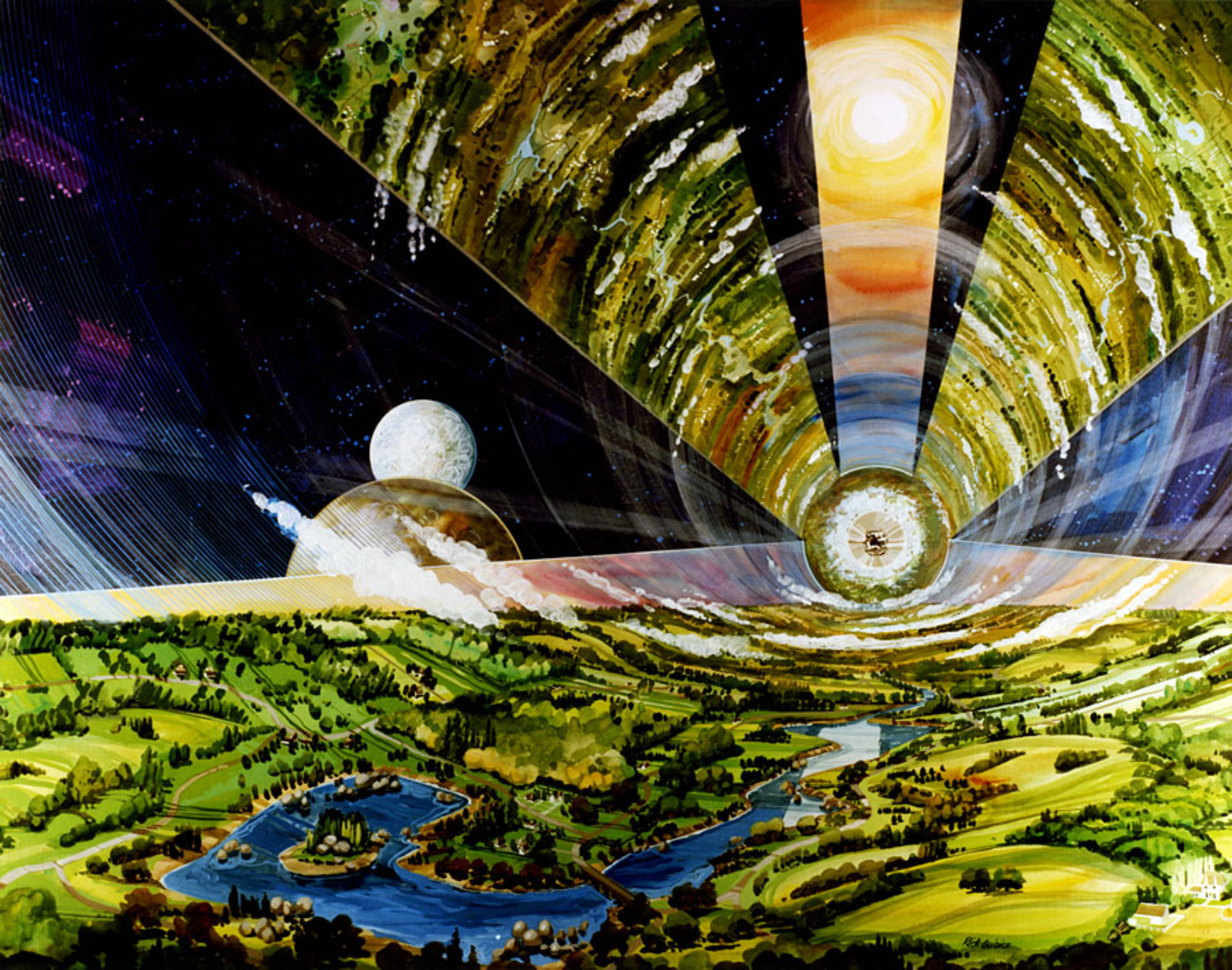
When Gerard K. O’Neill first proposed building enormous rotating space settlements at the Earth-Moon Lagrange points back in the 1970s he envisioned many space shuttle flights to launch the initial equipment and people into space. He thought that mass drivers placed on the Moon would be an efficient and cost effective mechanism for lofting copious amounts of lunar regolith needed for radiation shielding to protect colonists aboard the settlements. Alas, the economics of the shuttle did not work out back then, as reusability (among other things) was not ready for prime time, making launch costs a show stopper. Also, O’Neill thought that hundreds of people would be working under weightless conditions in space to fabricate the settlements. This was problematic because of the health hazards of exposure to radiation and microgravity.
All three problems can be solved according to David W. Jensen in an article posted on the ArXiv server. He envisions restructuring an asteroid into a spin gravity space settlement using self replicating robots to process asteroid materials in situ. High launch costs would be solved with a single modest-size probe containing a small number of seed robots that fashion more robots, tools and equipment. This approach bootstraps the colony fabrication through self replicating machines and in situ resource utilization.
“The restructuring process improves the productivity using self-replication parallelism and tool specialization.”
By removing humans from the initial asteroid processing activities, health risks from radiation and the deleterious effects of microgravity would be eliminated. Restructuring of the asteroid would take about a decade, after which colonists would have a rotating space settlement the size of a Stanford Torus providing Earth normal gravity and a safe living space shielded from radiation, ready for buildout and eventual occupation.

The key to this approach is self replication of robots delivered in the initial seed payload which significantly reduces costs by launching only one rocket to the target asteroid. The first machines sent are called replicators, or spiders for short. Four of these spiders with a minimum of supplies use the raw materials of the asteroid to make thousands of copies of themselves plus additional helper machines (tools and equipment). The spiders and helpers cooperate to produce end products of construction materials and the colony structures.
Jensen does not assume total self-replication, meaning that the robots do not need to make complete copies of themselves. A small percentage of more complex mechanisms such as microprocessors are provided in the initial payload as supplemental “vitamins” to finish out the machines. The intent is to minimize the need for humans in the initial construction phase. The objective is to fabricate a basic scaffolding for a rotating space settlement with access to an abundant storehouse of volatiles and metals. The final enclosed structure would then support migration of colonists who would complete construction and add more advanced manufacturing technologies such as solar cell production and microelectronics. As SSP has explained previously, complete closure of self-replicating machines is very challenging, but is not needed in this case.
The technology has wide applications and could be applied to Earth’s desserts, on the surface of the Moon or Mars, or even on the satellites of Jupiter and Saturn.
“We plan to apply and study these concepts for use in lunar, Titan, and Martian environments.”
Jensen’s restructuring process could complement or be combined with other asteroid mining architectures such as the University of Rochester’s approach which builds spin gravity cities starting with a carbon fiber collapsible scaffolding completely encapsulating the target asteroid. As the process matures it could be applied to even larger bodies such as the asteroid Ceres eventually combining settlements into a mega satellite community as envisioned by Pekka Janhunen.
“The equipment and process are scalable and … create a
space station structure that can support a population of nearly
one million people.”
